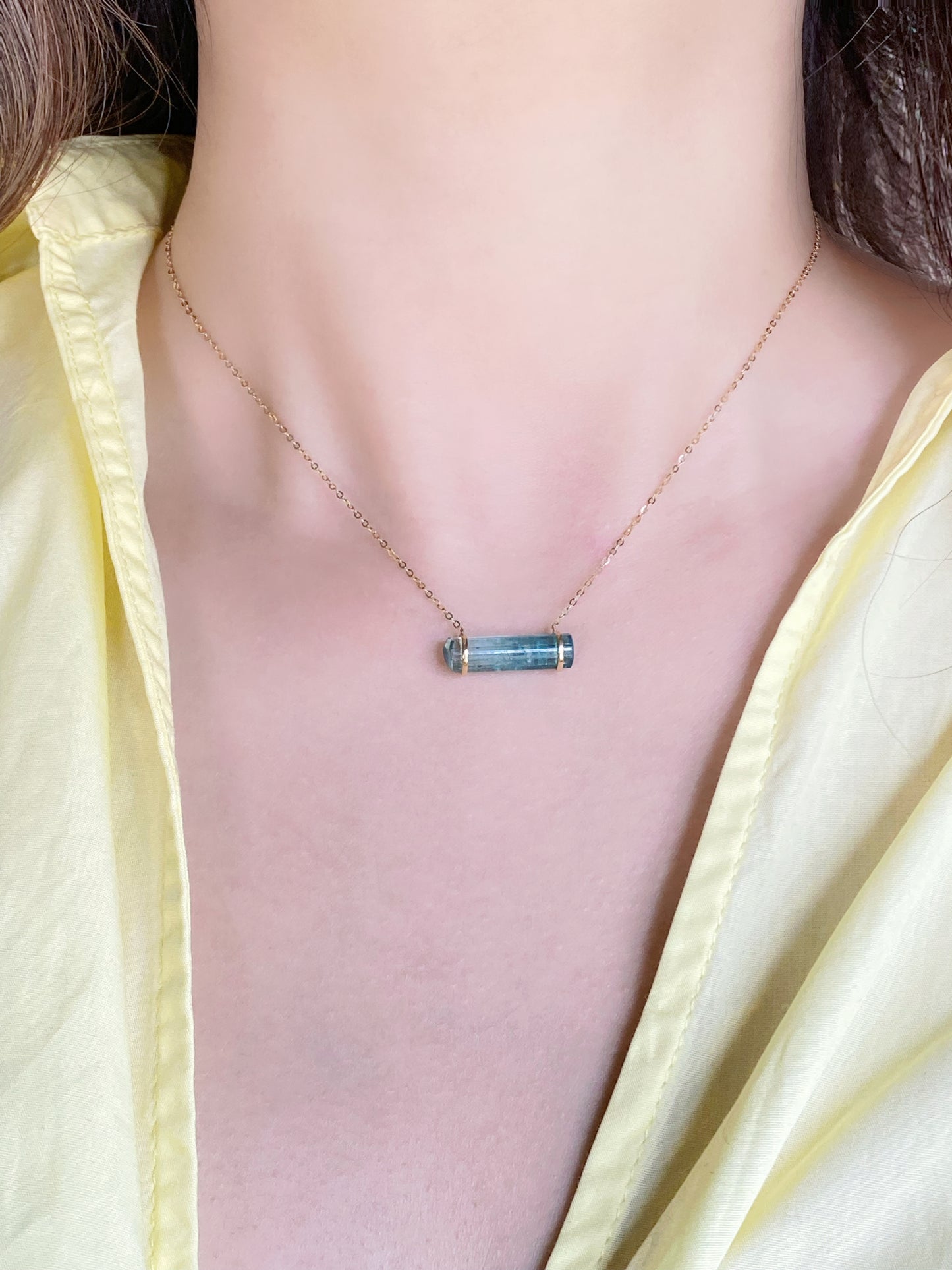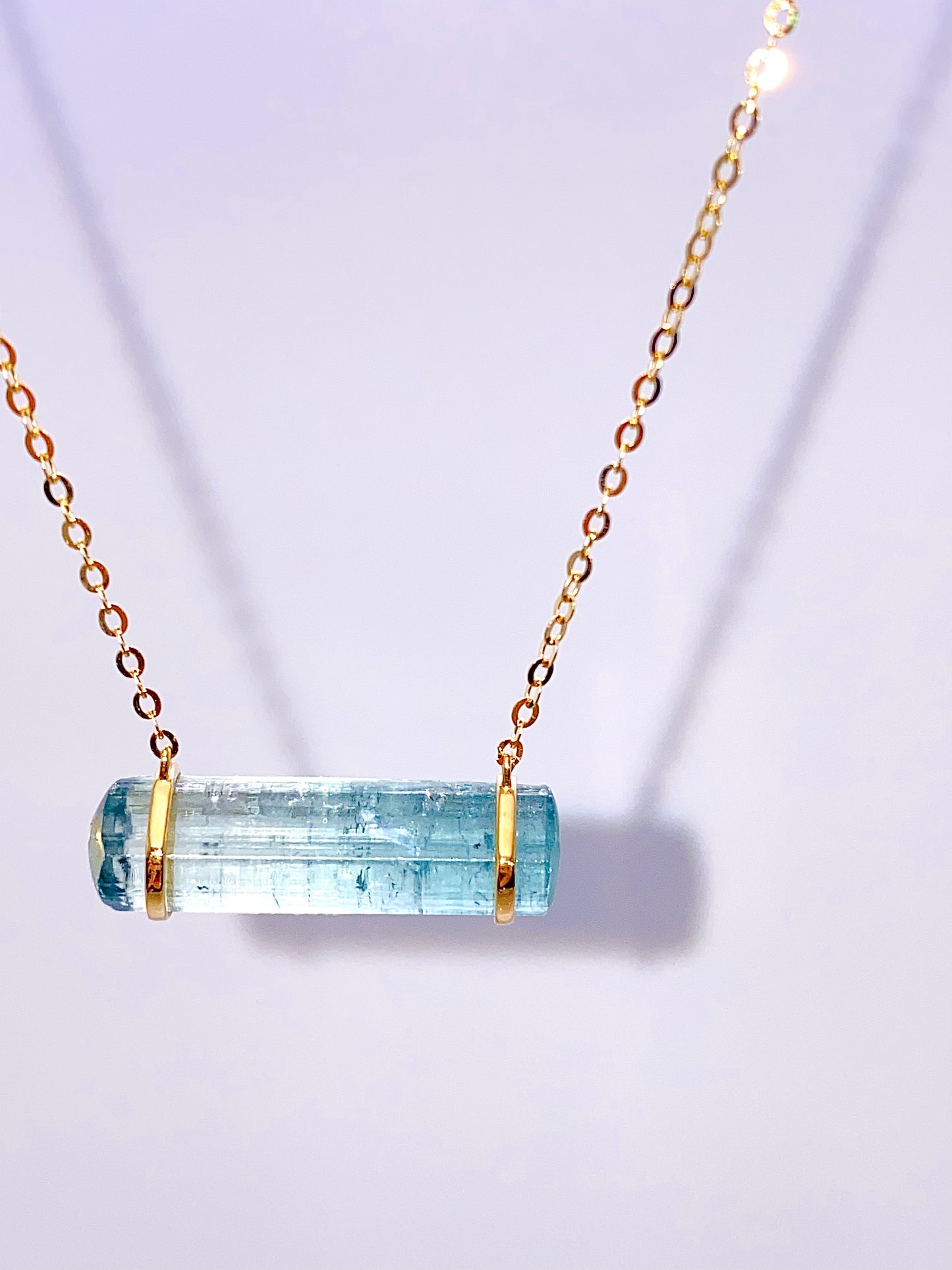Sarine Charisma
Precious Rare Paraiba Tourmaline Horizontal Gold Bar Necklace
Precious Rare Paraiba Tourmaline Horizontal Gold Bar Necklace
Couldn't load pickup availability
Rare Paraiba Tourmaline Horizontal Gold Bar Necklace.
Cable chain necklace in 18karat gold
Stone Size:21mm x 7mm
Necklace Length: 42cm-45cm
The Paraiba Blue version of Tourmaline is also known as Indicolite. It's specifically in encouraging clear, open, and honest communication. Rare Paraiba Tourmaline shimmering shades are similar to the flow of water, reminding us that transparency can bring true healing to the body, mind, and soul.


A popular staple in modern jewelry they boast a timeless shimmer.
Tourmalines
What are tourmalines?
Tourmaline is believed to promote inspiration and happiness, reduce fear, and build self-confidence among its users. It's also used to balance yin-yang energies, as it's considered a physical bridge to the spiritual.
Tourmaline comes in a variety of colors, the most common being black. It also comes in pink to red, blues, yellows, browns, greens, oranges, and then a combination of two or more of these colors. This is referred to as the rainbow tourmaline. The energies within the crystals differ depending on the colors.
Does tourmalines balancing the chakras?
Tourmalines, in general, are believed to be excellent tools for energizing and balancing the chakras, especially crystal wands made from tourmaline, for cleansing the aura and balancing the meridian system.
A good rule of thumb in regard to the healing properties of the various crystals is to match the colored crystals with the colors associated with the primary chakras (scroll down the page to see the chart of healing properties by color).
Shamanic use of tourmaline regionally through the ages includes healers from Africa, India, Australian indigenous tribes, and Native Americans.
What’s the benefits by colour of the tourmaline’s?
Red-violet, Deep pink (Rubellte) Root chakra healer; offers vitality to the physical body
Orange - Enhances creativity, stimulates the sacral chakra, and balances emotions of sexual nature
Yellow (Tsilasite) Aligns with the solar plexus chakra; boosts personal power and spiritual growth
Pink (Elbaite) Promotes joy and love
Green - Opens the heart chakra, allowing it to perceive what the third eye visualizes; teaches compassion; a must-have stone for the herbalist or anyone who works with plants; attracts success and abundance
Blue (Paraiba) Activates third eye and throat chakra; assists retrieval of higher knowledge and enhances inner knowing
Violet (Siberite) Protects against dark entities
Brown (Dravide) Cleanses the aura and auric field; can be used as a protective stone to bring peace and hope
Black (Aphrizite and Schorl) Repels negativity; lifts dark mood into the light; grounds root chakra to the earth energies
watermelon Promotes unconditional love; bonds the heart chakra energies with the higher self; enlightens energies, allowing room for laughter and lightness, releasing moods when being too serious neon Magnifier energy that can be used as a complementary tool to enhance healing properties of other healing stones; offers power and focus
Colorless (Achroite) Activates the crown chakra; assists communications with the ascended masters, extraterrestrial beings, and the angelic realm; also aids higher awareness
Care for tourmalines
Absorbing, aligning, and cleansing: Because it absorbs negative energy, it is very important to cleanse tourmaline after use. After aligning chakras and absorbing negative energy, the effects can easily be felt by those who believe in its power and uses. To balance the chakras in the body, the stone can be heated.
Hardness and toughness
Gem and mineral hardness is measured on the Mohs scale. The numbers are based on the relative ease or difficulty with which one mineral can be scratched by another. But the Mohs scale is deceptive. The steps between the minerals are not evenly spaced. For example, diamond is only one number away, but it’s many times harder than gems in the corundum family.
Tourmaline ranks 7 to 7.5 on the Mohs scale. Its toughness is considered Fair.
Stability
Tourmaline is generally stable to light and isn’t affected by exposure to chemicals, but heat can damage a tourmaline. High heat can alter the color, and sudden temperature change (thermal shock) can cause fracturing.
Some tourmalines might have been treated to improve their color. The two most important tourmaline treatments are heating and irradiation.
Changes resulting from heat treatment are stable and undetectable. Gems with abundant liquid inclusions can’t withstand heat treatment.
Color changes due to irradiation can fade with exposure to heat or bright light.
Cleaning
Warm, soapy water is the best method for cleaning tourmaline. The use of ultrasonic and steam cleaners is not recommended.


